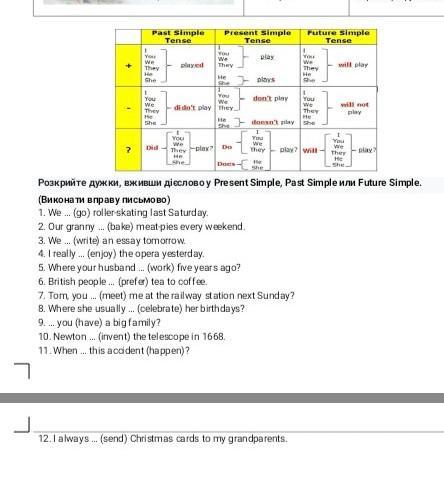Предмет: Английский язык,
автор: sofiazeleznakova79
ПОМОГИТЕ ЭТО СРОЧНО У МЕНЯ ПО УРОКАМ ОЧЕНЬ МНОГО ДОЛГОВ ПОМОГИТЕ
Приложения:

Ответы
Автор ответа:
1
Ответ:
1 Went
2 bakes
3 will write
4 Enjoyed
5 did work
6 prefers
7 will meet
8 celebrates
9 do
10 invented
11 did happen
12 просто send
Объяснение:
В твоей таблице всё объяснено
sofiazeleznakova79:
я просто не поняла
Там просто конструкции предложений, 1 колонка прошлое время, 2 настоящее(используют когда говорят о ежедневных делах( я каждый день просыпаюсь в 8 утра)), 3 колонка будущее время
Похожие вопросы
Предмет: Окружающий мир,
автор: чел2281
Предмет: Қазақ тiлi,
автор: АЯЖАН2009
Предмет: Английский язык,
автор: skiner174Lol
Предмет: Русский язык,
автор: Kenyais
Предмет: Қазақ тiлi,
автор: lyudagracheva